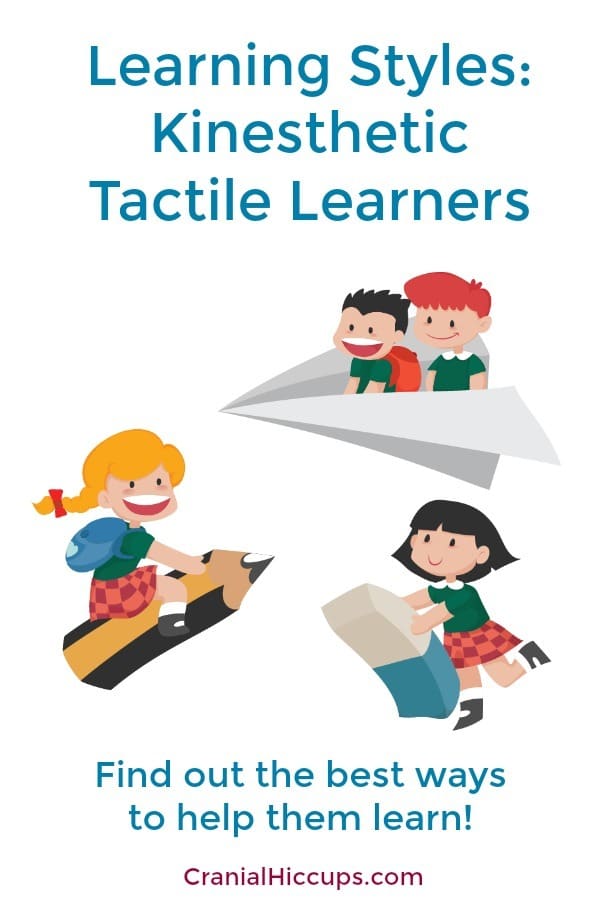My second daughter, Marie, is a highly tactile learner just like her father. She learns best when there are things to touch and feel, when she can move her body (she is also a musical learner but that is for another post). We first became aware of this while trying to teach her math. She just couldn’t grasp math concepts when taught the same way as her older sister (mainly through reading from a textbook). She was frustrated, I was frustrated! I feel badly about the first year or two of schooling her. I kept trying and trying to teach her the same way that my oldest (and myself) learn the best. Of course, it didn’t work very well. She learned things but it took a lot longer. School was not enjoyable for her.

It was during this hard time that I really started studying about different learning styles/multiple intelligences. I came to realize that in order for my daughter to come to love learning again I needed to adjust my teaching. For instance, I searched until I found a math program that was geared towards tactile learners (Math U See). The manipulatives, though simple, were extremely successful in helping her to ‘see’ the concepts. It was amazing the difference just a few weeks with the program made for her!
Here are some things I’ve learned about tactile learners.
They usually excel in one or more sports or have very good coordination.
They like to MOVE: fidgeting or tapping are not uncommon, especially when they have to sit for a long period of time.
They just “have” to touch something they have just seen.
They enjoy getting their hands messy – finger painting, working with clay, glue, etc.
They love to take things apart and put them back together again.
They have a dramatic way of expressing themselves.

Ways kinesthetic/tactile learners learn best:
- competitive and cooperative games
- physical awareness and relaxation exercises
- all hands-on activities
- creative movement, mime
- hands-on thinking
- communicating with body language/ hand signals
- tactile materials and experiences
- field trips
- crafts
- cooking, gardening, and other “messy” activities
- manipulatives
- virtual reality software
- physical education activities
- body answers

When Marie was in high school and taking independent study classes from BYU she learned various other ways to help her study so she could be prepared for college where most courses are taught through lecture, not ideal for tactile learners.
To memorize facts, she paced or walked around while reciting to herself or using flashcards or notes. She would also close her eyes and write the information in the air or on a surface with her finger. She would try to picture and hear the words in her head. Later when she needed to recall the information for a test she was able to close her eyes and ‘see’ what she wrote.
When she began reading a a new chapter in a textbook, she took a whole-to-part approach. This means she would first scan the pictures, then read headings, then read the first and last paragraphs and tried to get a feel for the content before reading the entire thing through.
She liked to study lying on her stomach or back, sitting in a comfortable lounge chair or on cushions or a bean bag but certainly not at a desk! Seeing her sitting upside down on the couch was a familiar scene.
Marie took frequent breaks. She would study for about 20-25 minutes than take a 5 minute break.
Marie took a plethora of notes! Writing helped her to not fidget so much and to concentrate on what was being said. She would rewrite her notes several times to help her study and retain information.
There are also other ways she studied but those fall under the musical learner which will be discussed in another post.
Links to the other learning intelligences are at the bottom of this post.
My oldest can’t sit still to save his life. When we first started doing homeschool, I told him “You don’t have to be still, you just have to be silent. I feel like you’re not paying attention if you’re making noise.” He would tumble all over the floor while I read to him… I have a vivid memory of him running full-speed back and forth in our living room while I read to him; he stopped running to ask a question about what I was reading, then resumed running after I answered his question. He was 6 1/2, and now at age 10 1/2 he can play with legos or k’nex or origami while he listens, but he still can’t JUST listen!
Thank you for this post full of ideas! I was worried about how he would do in college, so it’s very reassuring to hear the your tactile/kinesthetic daughter is doing well 🙂